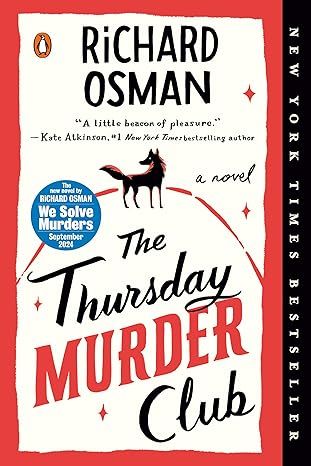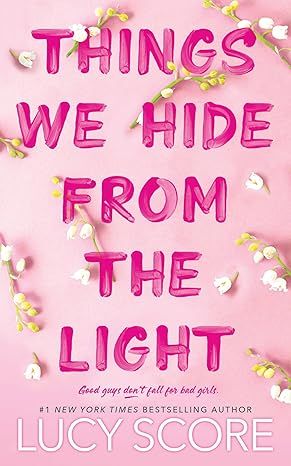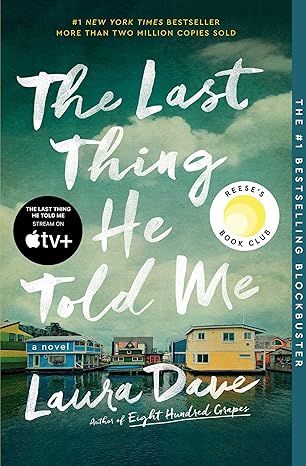Out of Africa (Modern Library 100 Best Nonfiction Books)
4.5
-
1,745 ratings
Selected by the Modern Library as one of the 100 best nonfiction books of all time
In this book, the author of Seven Gothic Tales gives a true account of her life on her plantation in Kenya. She tells with classic simplicity of the ways of the country and the natives: of the beauty of the Ngong Hills and coffee trees in blossom: of her guests, from the Prince of Wales to Knudsen, the old charcoal burner, who visited her: of primitive festivals: of big game that were her near neighbors--lions, rhinos, elephants, zebras, buffaloes--and of Lulu, the little gazelle who came to live with her, unbelievably ladylike and beautiful.
The Random House colophon made its debut in February 1927 on the cover of a little pamphlet called "Announcement Number One." Bennett Cerf and Donald Klopfer, the company's founders, had acquired the Modern Library from publishers Boni and Liveright two years earlier. One day, their friend the illustrator Rockwell Kent stopped by their office. Cerf later recalled, "Rockwell was sitting at my desk facing Donald, and we were talking about doing a few books on the side, when suddenly I got an inspiration and said, 'I've got the name for our publishing house. We just said we were go-ing to publish a few books on the side at random. Let's call it Random House.' Donald liked the idea, and Rockwell Kent said, 'That's a great name. I'll draw your trademark.' So, sitting at my desk, he took a piece of paper and in five minutes drew Random House, which has been our colophon ever since." Throughout the years, the mission of Random House has remained consistent: to publish books of the highest quality, at random. We are proud to continue this tradition today.
This edition is set from the first American edition of 1937 and commemorates the seventy-fifth anniversary of Random House.
Read more
Audiobook
$0.00
with membership trial
Hardcover
$15.59
with membership trial
Paperback
$17.80
Mass Market Paperback
$20.93
Ships from
Amazon.com
Payment
Secure transaction
ASIN
0679600213
ISBN-10
9780679600213
ISBN-13
978-0679600213
Print length
416 pages
Language
English
Publisher
Modern Library
Publication date
September 04, 1992
Dimensions
5 x 1.18 x 7.57 inches
Item weight
14.8 ounces
Editorial reviews
From 1914 to 1931, Danish aristocrat Baroness Karen Blixen owned and operated a coffee plantation in Kenya. After the plantation failed, she returned to Europe and began to write under the pen name Isak Dinesen. Out of Africa reads like a collection of stories in which she adheres to no strict chronology, gives no explanation of the facts of her life, and apologizes for nothing. First published in 1937, Out of Africa is not free of the colonial or racist attitudes of its time; yet, within that context, Isak Dinesen is an enlightened observer and participant as she describes the experience of British East Africa before World War II. She portrays in rich detail the vast land around her, alive with strange and wonderful human populations; the thrilling terror of a nocturnal lion hunt; a shooting accident among the Africans on her farm and its repercussions; raising and freeing an orphaned antelope fawn; getting to know the Africans and the colonial adventurers who found their way into her life. "If I know a song of Africa," she writes, "of the Giraffe, and the African new moon lying on her back, of the ploughs in the fields, and the sweaty faces of the coffee-pickers, does Africa know a song of me?" Out of Africa is that song. -- For great reviews of books for girls, check out Let's Hear It for the Girls: 375 Great Books for Readers 2-14. -- From 500 Great Books by Women; review by Lynne Auld
Read more
About the authors
Isak Dinesen
Baroness Karen von Blixen-Finecke a Danish author, also known by the pen name Isak Dinesen, who wrote works in Danish, French and English. She also at times used the pen names Tania Blixen, Osceola, and Pierre Andrézel.
Blixen is best known for Out of Africa, an account of her life while living in Kenya, and for one of her stories, Babette's Feast, both of which have been adapted into Academy Award-winning motion pictures. She is also noted for her Seven Gothic Tales, particularly in Denmark.
Peter Englund, permanent secretary of the Swedish Academy, described it as "a mistake" that Blixen was not awarded the Nobel Prize in Literature during the 1930s. Although never awarded the prize, she finished in third place behind Graham Greene in 1961, the year Ivo Andrić was awarded the prize.
Read more
Reviews
Customer reviews
4.5 out of 5
1,745 global ratings
Stephanie De Pue Murphy
5
Not a Perfect Book But a Must Read
Reviewed in the United States on June 11, 2017
Verified Purchase
OUT OF AFRICA,(1937). This classic nonfiction by Isak Dinesen, about her years on a farm in Africa is an eternal, much loved,worldwide bestseller; has been selected by the Modern Library as one of the 100 best nonfiction books of all time. Its opening line, “I had a farm in Africa, at the foot of the Ngong Hills,” is one of the most famous, most quoted in all literature. The memoir, which was written nearly 100 years ago with great unsentimental clarity and intelligence, portrays a way of life that has since disappeared. The book has been made into an Oscar-winning, much loved, eternally, worldwide bestselling film of the same name.
In 1914, shortly before the outbreak of World War I, the Danish Baroness Karen Blixen arrived in Kenya, East Africa, with Baron Bror Blixen, her Swedish husband, to run a coffee farm. She was instantly drawn to the land, and the Continent; spent her happiest years there until the plantation, which was located at too high an altitude for coffee growing, failed. Blixen was forced to return to Denmark in 1931; it was there that she wrote this classic account of her experiences under her Dinesen pen name. A poignant farewell to her beloved farm, OUT OF AFRICA describes her strong friendships with the people of her area, her affection for the landscape and animals, her great love for the adventurer Denys Finch-Hatton.
In this book, the author of SEVEN GOTHIC TALES and the short story BABETTE’S FEAST, which was also made into an Oscar-winning film, gives a true account of life on her plantation in Kenya. She tells, with forthright simplicity of the ways of the country and its natives: of the beauty of the Ngong Hills and coffee trees in blossom; of her guests, from the Prince of Wales to Knudsen, the old charcoal burner, who visited her; of local native festivals. Of big game that were her near neighbors--lions, rhinos, elephants, zebras, buffaloes--and Lulu, the little gazelle who came to live with her, who was charmingly ladylike and beautiful.
There is no question but that Dinesen’s first chapter, in which she introduces herself to Africa and Africa to the world, is extremely powerful, as is her last, in which she describes her burial of her lover Finch-Hatton, and her forced departure from the land she loved. In between, however, things can get a bit poky. There is also no question but that this book, written so long ago, reflects realities of the time which some of us hope are no longer so. I have recently visited the Blixen house, and it is full of animal skins, including items which I particularly hate, those rugs with the animals’ heads still on. The writer mentions killing an animal for its pretty coat: I, and many others, I hope, believe that an animal needs her pretty coat more than any person does. The author also describes a paternalistic, maternalistic outlook on the natives; yet a native servant is beaten to death for the sin of having ridden, rather than walked, a horse home. This kind of behavior undoubtedly helped cause the bloodthirsty largely Kikuyu-dominated 1952-1960 Mau Mau insurrection in Kenya, which was aimed at white settlers and farmers, ended only with the designation of Kenya as a member of the British Commonwealth, not as a colony. But, of course, the past is past, and cannot be changed.
Ah, and the writer also says, “On the Western wall of my house there was a stone seat and in front of it a table made out of a mill-stone. This stone had a tragic history: it was the upper millstone of the mill of the two murdered Indians. After the murder nobody dared to take over the mill, it was empty and silent for a long time, and I had the stone brought up to my house to form a table top, to remind me of Denmark. The Indian millers had told me that their mill-stone had come over the Sea from Bombay, as the stones of Africa are not hard enough for the work of grinding. On the top side a pattern was carved, and it had a few large brown spots on it, which my houseboys held to be the blood of the Indians, that would never come off. The millstone table in a way constituted the centre of the farm, for I used to sit behind it in all my dealings with the Natives. From the stone seat behind the mill-stone, I and Denys Finch- Hatton had one New Year seen the new moon and the planets of Venus and Jupiter all close together, in a group on the sky; it was such a radiant sight that you could hardly believe it to be real….”
On my recent trip to Kenya, I got to sit on the stone seat behind the millstone table: see the attached picture. A very proud moment for me. This is not a perfect book, but it’s a must read.
Read more
82 people found this helpful
Thomasina
5
Jackie Kennedy Onassis’s favorite book
Reviewed in the United States on June 8, 2019
Verified Purchase
Jacqueline Kennedy Onassis wrote two Afterwords in the form of handwritten letters for “Longing for Darkness: Kamante’s Tales From Out of Africa.” She told the narrator Kamante Gatura that Out of Africa was the book “that has meant the most to me.” It is not difficult to see why.
There’s a strong sense of loss towards the latter end of the book, as there were great losses in Isak Dinesen and Jacqueline Onassis’s lives. After decades of struggle, Dinesen lost her farm “at the foot of the Ngong Hills” in Kenya and left for Denmark, broke. She also left behind the still-fresh grave of her lover of ten years, Denys Finch-Hatton, who died in his 40s when his plane crashed. She bravely started from scratch, writing to support herself until her death. She was able to carry on, while fiercely never letting go of her memories of Finch-Hatton. She was also never able to return to Africa even for just a visit, despite several attempts, due to lack of funds and later, ill-health.
Jacqueline Kennedy, as everyone knows, lost her husband violently. President Kennedy, also in his 40s, died in her arms, and she cradled his broken body all the way to the hospital. The horrific experience led to Post-Traumatic Stress Disorder, and an inability to look at any pictures of him her whole life. Suddenly, she had to pack up in a hurry and leave the house where she had her happiest years of her life with him and their two young children, not even having the space to grieve quietly and slowly. While not impoverished like Dinesen, she was hounded her whole life by paparazzi, as were her two children, while Dinesen’s privacy remained intact. Unlike Dinesen, she did not have to struggle financially; her husband’s family saw to that. She also enjoyed good health most of her life before cancer took her swiftly in her early 60s, while Dinesen was never free of pain and surgeries. (Dinesen, however, lived to be 72). Unlike Dinesen, she had to cope with murders twice, as the brother-in-law who was her bedrock and that of her children also fell to an assassin’s bullet.
I do not know who had greater things to surmount. And in the end, it doesn’t matter. What matters is how alike they were. Jackie was cultured and poetic, as was Dinesen. Both made beautiful homes. Both wrote beautifully. Each had tremendous self-discipline, dignity and a strong moral code. Both were highly private. Never in Out of Africa and elsewhere does Dinesen ever refer to Finch-Hatton as other than a good friend. Never would Jackie ever talk about JFK after participating in the oral history of the Kennedy years for his presidential library.
These admirable qualities can be clearly discerned in Out Of Africa. Dinesen was a source of wisdom, and succor for the Africans in her orbit. She was an environmentalist. She was a gifted painter. She was a great cook. All these are revealed in her vignettes of her life, written leisurely around seven years after she departed forever from Africa. Remarkably, it is written in English, which was not her native language. By that criteria alone, it is a work of genius for its eloquence and fluency. Her short stories, also written in English, reinforce that impression.
It’s a quiet and subtle book, and a powerful one. It’s tremendously moving. There’s a stately tone to it, and when she talks about the inevitable changes in landscape, her tone is elegiac but overall, matter of fact.
I cannot recommend this memoir highly enough.
Read more
48 people found this helpful
Peri L Crim
5
Very Good Story
Reviewed in the United States on February 12, 2024
Verified Purchase
Although was not read by me-sent as a present to a nephew on his birthday. Thinking he should love it! As I loved my book of Out of Africa. Good price & came quickly!
Best sellers
View all
The Tuscan Child
4.2
-
100,022
$8.39

The Thursday Murder Club: A Novel (A Thursday Murder Club Mystery)
4.3
-
155,575
$6.33

Sapiens: A Brief History of Humankind
4.6
-
140,302
$13.49

The Butterfly Garden (The Collector, 1)
4.3
-
88,556
$9.59

Things We Hide from the Light (Knockemout Series, 2)
4.4
-
94,890
$11.66

The Last Thing He Told Me: A Novel
4.3
-
154,085
$2.99

The Perfect Marriage: A Completely Gripping Psychological Suspense
4.3
-
143,196
$9.47

The Coworker
4.1
-
80,003
$13.48

First Lie Wins: A Novel (Random House Large Print)
4.3
-
54,062
$14.99

Mile High (Windy City Series Book 1)
4.4
-
59,745
$16.19

Layla
4.2
-
107,613
$8.99

The Locked Door
4.4
-
94,673
$8.53

